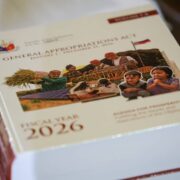Pandemic worries, high prices forced PH couples to delay having kids

The economic uncertainties brought by the Covid-19 pandemic, further worsened by soaring prices of essential goods and services, forced Filipino couples to delay or deprioritize having children due to their perceived lack of financial capacity and insufficient income, according to the Commission on Population and Development (CPD).
In “Fertility Decline during Covid-19 Pandemic,” a qualitative study undertaken by the Philippine Statistical Research and Training Institute for the CPD, it was found that the decision of couples not to have children during the pandemic increased the acceptability of modern family planning (FP) methods.
But even prior to the contagion, data from the Philippine Statistics Authority (PSA) showed that the majority of the country’s regions were already displaying a decline in the total number of registered births since 2019.
Fewer babies born“Our recent study supports the assumption that Filipinos, even before the Covid-19 health situation, were already keen with their mindsets of delaying life-defining events, such as dating, marriages and having children,” CPD Executive Director Lisa Grace Bersales said on Thursday.“These preferences were reinforced by the shocks in broader socioeconomic conditions, and the rise in the level of uncertainties in various aspects of the pandemic. We are now monitoring whether these fertility behaviors have become the norm postpandemic,” she added.
Based on PSA data, the downward trend of total registered live births (number of children born alive) was observed as early as 2017 to 2018, when there was a 1.91 percent decline in total registered live births to 1.67 million from 1.7 million. This further dipped by 0.35 percent in 2019 to 1.67 million.
The drop was more pronounced at the onset of the pandemic in 2020 when only 1.53 million babies were born, a decline of 8.68 percent year-on-year in live births.
In 2021, this fell further by 10.72 percent to 1.36 million, before eventually rebounding by 6.64 percent to 1.46 million live births in 2022, when pandemic restrictions were relaxed.
Based on the CPD study, Bersales said the prevalence of contraceptive use as a form of modern FP rose to 42 percent in 2022 from 40 percent in 2017.
“Filipinos have increased their dependency on FP methods, of which the pandemic was deemed as a key catalyst for the hike in their usage. The study revealed that female-centric methods: pills, ligation or female sterilization, and injectables are still the most preferred methods, and that women still carry out decisions with regard to FP as compared to men,” Bersales explained.The CPD chief noted that the country’s fertility rate (the number of children that would be born to a woman during her reproductive years, usually from age 15 to 49) declined from 2.7 in 2017 to 1.9 in 2022.
Below replacement levelCountries need a fertility rate of 2.1 children per woman, a number called the replacement level, to maintain stable population numbers. When the fertility rate falls below the replacement level, populations begin to shrink.
During the same period, Filipino women who wanted to bear more children declined to 48.8 percent from 52.6 percent, while Filipino women who wanted to have a child soon decreased to 13.9 percent from 15.1 percent.
“One positive result that came out from the pandemic was the more conscious consideration of couples’ and families’ socioeconomic capacities, as well as preparedness in their childbearing decisions,” Bersales noted.
The CPD study was consistent with a report published in The Lancet medical journal in March projecting that the global fertility rate, which went down to 2.23 in 2021 from 4.84 in 1950, would continue to fall to 1.59 by 2100, or well below the ideal 2.1.The CPD study noted that while the decrease in the number of children over the years could be beneficial in the short term by bringing a measure of economic relief, the continuous and sharp decrease in the number of live births might be disadvantageous in the long run in terms of a larger aging population. INQ




















